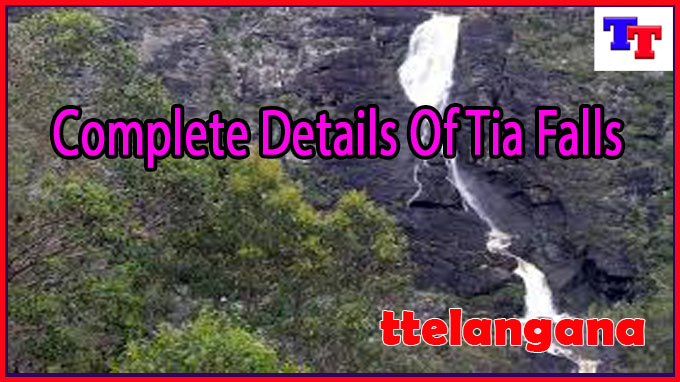Complete Details Of Tia Falls
Complete Details Of Tia Falls.Tia Falls is a beautiful herbal appeal positioned in New South Wales, Australia. It is a stunning waterfall and gorge device that attracts visitors with its breathtaking scenery and the encompassing natural environment.
Introduction
Tia Falls is a fascinating herbal surprise situated within the Oxley Wild Rivers National Park in New South Wales, Australia. It is renowned for its picturesque waterfall, which cascades down rugged cliffs right into a pristine gorge below. The falls are a outstanding function of the Tia River, and the encircling region offers a various range of flowers and fauna, making it a haven for nature fans and adventurers.
Location
Tia Falls is situated in the northern a part of New South Wales, inside the Oxley Wild Rivers National Park. The falls are positioned approximately 30 kilometers northwest of Walcha and 80 kilometers southeast of Armidale. The park itself spans over 145,000 hectares and is characterized by means of its dramatic gorges, waterfalls, and various landscapes.
Geological Features
The geological formation of Tia Falls is an vital thing of its beauty and forte. The falls are located within a location characterised through rugged sandstone cliffs and steep gorges. The Tia River flows over these cliffs, creating a spell binding waterfall that plunges into the gorge beneath. The layered sandstone formations, shaped by tens of millions of years of natural forces, make a contribution to the picturesque look of Tia Falls.
Flora and Fauna
The Tia Falls place is rich in biodiversity, showcasing a whole lot of plant and animal species. The surrounding plant life includes a mixture of eucalyptus forests, woodlands, and lush fern-filled gullies. Some brilliant flowers within the place include towering eucalyptus timber, ferns, native grasses, and colourful wildflowers.
The numerous habitat draws a big range of fauna, such as various fowl species which include kookaburras, lorikeets, and wedge-tailed eagles. Additionally, visitors can also come upon kangaroos, wallabies, possums, and various reptiles and insects.
Accessibility
Tia Falls is without difficulty handy through road, making it a popular destination for each day trips and longer visits. The falls can be reached thru a well-maintained avenue that leads to a designated parking place near the viewing systems. From the parking location, visitors can take a brief walk to attain the viewing structures for a awesome view of Tia Falls.
Viewing Platforms
Tia Falls offers multiple viewing structures strategically located to provide traffic with the high-quality views of the waterfall and the encircling gorge. These platforms permit visitors to safely study and respect the herbal splendor of the falls from diverse angles. The vantage points provide opportunities for pictures and a danger to immerse oneself in the tranquil environment of the area.
Complete Details Of Tia Falls

Recreational Activities
Tia Falls and its surrounding vicinity provide a number of recreational activities for traffic to experience. Some popular activities consist of:
- Hiking and Bushwalking: The Oxley Wild Rivers National Park, in which Tia Falls is placed, boasts an intensive network of strolling trails. Visitors can explore the numerous landscapes, which include rainforests, woodlands, and gorges, by way of embarking on hikes of varying lengths and problem stages.
- Picnicking: The exact picnic regions near Tia Falls offer an extremely good opportunity for site visitors to revel in a relaxing picnic amidst the herbal splendor of the park.
- Photography: The lovely surroundings at Tia Falls and the surrounding location gives adequate possibilities for images fans to capture beautiful moments and landscapes.
- Wildlife Watching: The numerous array of natural world in the vicinity makes it a great destination for flora and fauna enthusiasts to study and photograph numerous animal species.
History and Indigenous Significance
The place encompassing Tia Falls holds top notch cultural and historic significance, specifically for the nearby Aboriginal groups. The falls and the encompassing land are a part of the traditional lands of the Anaiwan and Gumbaynggirr Aboriginal peoples. These communities have a deep connection to the land, which is meditated of their cultural practices, memories, and religious ideals.
Understanding and respecting the cultural importance of the land is essential for traffic. Many site visitors take part in guided tours led by Indigenous courses, presenting precious insights into the rich Aboriginal history and the significance of maintaining and respecting the land.
Nearby Attractions
Tia Falls is located in near proximity to numerous other attractions that traffic may want to explore:
Apsley Falls:
Apsley Falls, every other stunning waterfall in the Oxley Wild Rivers National Park, is a brief power far from Tia Falls. Visitors can experience the sight of the water cascading over the rocks and into the gorge under.
Cathedral Rock National Park:
Cathedral Rock National Park is renowned for its towering rock formations and stunning vistas. It’s a wonderful location for trekking, mountain climbing, and images.
Conservation Efforts
Preserving the herbal splendor and biodiversity of Tia Falls and its surrounding regions is a priority for conservationists and park management. Efforts are underway to sustainably manipulate tourist get entry to, manipulate invasive species, and restore and shield the natural habitats of the vegetation and fauna. Educational programs are also conducted to elevate consciousness about the significance of conservation and accountable tourism amongst traffic.
Conclusion
Tia Falls is a fascinating natural appeal that showcases the splendor of Australian desolate tract. With its lovely waterfall, dramatic geological functions, diverse vegetation and fauna, and leisure sports, Tia Falls is a have to-go to vacation spot for nature enthusiasts and those seeking a tranquil and awe-inspiring enjoy within the heart of New South Wales. Understanding and appreciating the herbal and cultural significance of this vicinity is critical to make certain its renovation for generations to come back.